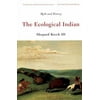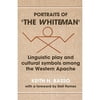Updated On April 5th, 2025
Looking for the best Native American History Books? You aren't short of choices in 2022. The difficult bit is deciding the best Native American History Books for you, but luckily that's where we can help. Based on testing out in the field with reviews, sells etc, we've created this ranked list of the finest Native American History Books.
| Rank | Product Name | Score | |
|---|---|---|---|
| 1 |

|
LTL PSTCRD NORTH AMER INDIAN
Check Price
|
100%
|
| 2 |

|
People of Chaco: A Canyon and Its Culture (Revised), (Paperback)
Check Price
|
0%
|
| 3 |

|
Halfbreed (Paperback)
Check Price
|
0%
|
| 4 |

|
The Ecological Indian: Myth and History, (Paperback)
Check Price
|
0%
|
| 5 |

|
Dakota War of 1862 (Paperback)
Check Price
|
0%
|
| 6 |

|
Native American: Yucatan Before and After the Conquest (Paperback)
Check Price
|
0%
|
| 7 |

|
Portraits of 'The Whiteman': Linguistic Play and Cultural Symbols Among the Western Apache, (Paperback)
Check Price
|
0%
|
| 8 |

|
The Civilization of the American Indian Series: Chief Bowles and the Texas Cherokees (Series #113) (Paperback)
Check Price
|
0%
|
| 9 |

|
American Indian Portrait Cards : 24 Lithographs from McKenney and Hall's "Indian Tribes"
Check Price
|
0%
|
| 10 |

|
The Codex Borgia
Check Price
|
0%
|

Our Score
Ltl Pstcrd North Amer Indian
Brand New 800759271733 Dover DO27173-0

Our Score
In northwestern New Mexico's Chaco Canyon lies a spectacular array of ruins. Like Stonehenge, they are both a monument to our pre-history and a cryptic puzzle. We know that in Chaco Canyon, one thousand years ago, there arose among the Pueblo people a great and culturally sophisticated civilization. But many questions remain: Just what function did Chaco Canyon fulfill? How great was its extent and influence? Why did its culture collapse? First published in 1986 and now updated with the latest archaeological and anthropological evidence, People of Chaco is an essential book for the general reader on the Chaco culture and ruins. With grace and erudition, Kendrick Frazier scours the canyon for clues about its unique cultural system, confirms its importance to archaeology, and saves this vital American narrative from the oblivion of history.
People of Chaco: A Canyon and Its Culture (Revised), (Paperback) Author: W. W. Norton & Company ISBN: 9780393318258 Format: Paperback Publication Date: 2005-04-01 Page Count: 336

Our Score
For Maria Campbell, a Canadian mitis, the brutal realities of poverty, pain, and degradation intrude in childhood and follow her every step. "I write this for all of you, to tell you what it is like to be a Halfbreed woman in our country."
"I write this for all of you, to tell you what it is like to be a Halfbreed woman in our country. I want to tell you about the joys and sorrows, the oppressing poverty, the frustration and the dreams. . . . I am not bitter. I have passed that stage. I only want to say: this is what it was like, this is what it is still like." For Maria Campbell, a Métis ("Halfbreed") in Canada, the brutal realities of poverty, pain, and degradation intruded early and followed her every step. Her story is a harsh one, but it is told without bitterness or self-pity. It is a story that begins in 1940 in northern Saskatchewan and moves across Canada's West, where Maria roamed in the rootless existence of day-to-day jobs, drug addiction, and alcoholism. Her path strayed ever near hospital doors and prison walls. It was Cheechum, her Cree great-grandmother, whose indomitable spirit sustained Maria Campbell through her most desperate times. Cheechum's stubborn dignity eventually led the author to take pride in her Métis heritage, and Cheechum's image inspired her in her drive for her own life, dignity; and purpose.

Our Score
The idea of the Native American living in perfect harmony with nature is one of the most cherished contemporary myths. But how truthful is this larger-than-life image? According to anthropologist Shepard Krech, the first humans in North America demonstrated all of the intelligence, self-interest, flexibility, and ability to make mistakes of human beings anywhere. As Nicholas Lemann put it in The New Yorker, "Krech is more than just a conventional-wisdom overturner; he has a serious larger point to make. . . . Concepts like ecology, waste, preservation, and even the natural (as distinct from human) world are entirely anachronistic when applied to Indians in the days before the European settlement of North America." "Offers a more complex portrait of Native American peoples, one that rejects mythologies, even those that both European and Native Americans might wish to embrace."--Washington Post
The Ecological Indian: Myth and History, (Paperback) Author: W. W. Norton & Company ISBN: 9780393321005 Format: Paperback Publication Date: 2000-09-17 Page Count: 320

Our Score
The Dakota War of 1862 draws on a wealth of written and visual materials by white and American Indian participants and observers showing both the sources of the Dakotas' wrath and the terrible consequences of the conflict.
The Dakota War of 1862 (Paperback)

Our Score
Describes geography and natural history of the peninsula, gives brief history of Mayan life, discusses Spanish conquest, and provides a long summary of Maya civilization. 4 maps, and over 120 illustrations.
These people also used certain characters or letters, with which they wrote in their books about the antiquities and their sciences. We found a great number of books in these letters and since they contained nothing but superstitions and falsehoods of the devil we burned them all, which they took most grievously, and which gave them great pain. So writes Friar Diego de Landa in his Relación De las cosas de Yucatan of 1566, the basic book in Maya studies. Landa did all he could to wipe out Maya culture and civilization. In the famous auto da fé of July 1562 at Maní, as he tells us, he destroyed 5,000 "idols" and burned 27 hieroglyphic rolls. And yet paradoxically Landa's book, written in Spain to defend himself against charges of despotic mismanagement, is the only significant account of Yucatan done in the early post-Conquest era. As the distinguished Maya scholar William Gates states in his introduction, "ninety-nine percent of what we today know of the Mayas, we know as the result either of what Landa has told us in the pages that follow, or have learned in the use and study of what he told." Yucatan Before and After the Conquest is the first English translation of this very important work. Landa's book gives us a full account of Maya customs, daily activities, history, ceremonial festivals, and the many social and communal functions in which their life was expressed. Included here are the geography and natural history of Yucatan, the history of the Conquest, indigenous architecture and other aspects of Maya civilization (sciences, books, religion, etc.), native historical traditions, the Inquisition instituted by the Spanish clergy, Maya clothing, food, commerce, agriculture, human sacrifices, calendrical lore, and much more.

Our Score
'The Whiteman' is one of the most powerful and pervasive symbols in contemporary American Indian cultures. Portraits of 'the Whiteman': linguistic play and cultural symbols among the Western Apache investigates a complex form of joking in which Apaches stage carefully crafted imitations of Anglo-Americans and, by means of these characterizations, give audible voice and visible substance to their conceptions of this most pressing of social 'problems'. Keith Basso's essay, based on linguistic and ethnographic materials collected in Cibecue, a Western Apache community, provides interpretations of selected joking encounters to demonstrate how Apaches go about making sense of the behaviour of Anglo-Americans. This study draws on theory in symbolic anthropology, sociolinguistics, and the dramaturgical model of human communication developed by Erving Goffman. Although the assumptions and premises that shape these areas of inquiry are held by some to be quite disparate, this analysis shows them to be fully compatible and mutually complementary.
Portraits of 'The Whiteman': Linguistic Play and Cultural Symbols Among the Western Apache, (Paperback) Author: Cambridge University Press ISBN: 9780521295932 Format: Paperback Publication Date: 1979-08-31 Page Count: 144

Our Score
Chief Bowles and the Texas Cherokees
Here is the gripping story of the last stand of Chief Philip Bowles of the Chickamauga Cherokee Indians of Texas. Mary Whatley Clarke sets this tale against the stormy background of Anglo-Cherokee-Mexican relations in early nineteenth-century Texas. The Chickamauga Cherokees from Running Water on the Tennessee River were continually forced to relocate–first to Missouri, then to Arkansas, and finally to Texas. They managed to make a home of their new Texas residence. Then, as has happened many times before and since in Anglo-Indian relations, settlers began to look with increasing desire at the rich Indian lands. The Chickamauga Cherokee had had enough of relocation, and, on a blistering July day in 1839, Chief Bowles and his warriors made a tragic and bloody final stand on the battlefield defending their new Texas home. Their stand resulted in defeat and the dispersal of the Chickamauga Cherokees to far-flung homes on reservations. Could this history have taken a different course? Perhaps not, for, as Mary Whatley Clarke observes, the Cherokee had become “a red island in a white sea,” and it seems inevitable that the Anglo-American would submerge that island.

Our Score
Meticulously detailed full-color reproductions of rare portraits depict American Indians in authentic costumes and regalia. Captions and notes.
Superb, finely detailed full-color reproductions of rare portraits, the first of their kind by an American painter. These cards comprise an extraordinary gallery of realistically depicted American Indians of various tribes, shown in authentic costumes and regalia. Identifying captions and descriptive notes.

Our Score
First republication of remarkable repainting of great Mexican codex, dated to ca. AD 1400. 76 large full-color plates show gods, kings, warriors, mythical creatures, and abstract designs. Introduction.
The Codex Borgia